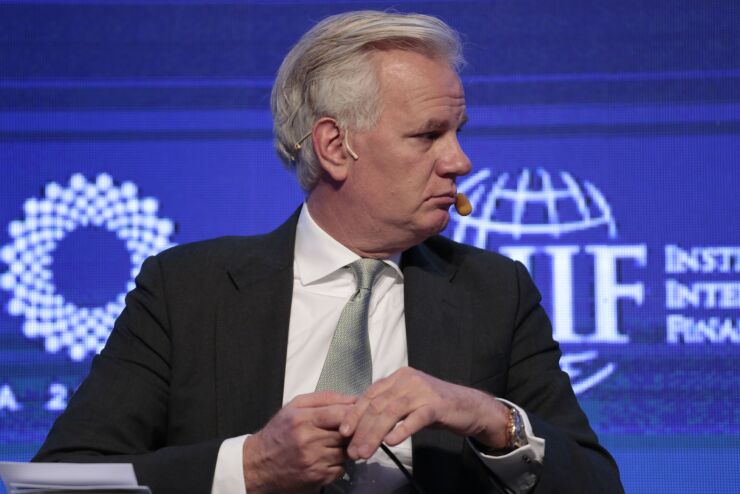
(Bloomberg) --Citigroup is exploring entirely new deal structures it says have the potential to entice risk-averse investors to emerging markets via a controversial corner of climate finance.
The market for carbon credits, which has yet to be regulated, has untapped applications that — if done right — would help mobilize capital for climate projects, according to Jay Collins, vice chairman of banking, capital markets and advisory at Citi. He said initiatives announced at the COP28 climate summit to clean up the carbon offset market are paving the way for banks like Citi to start constructing such deals.
There have been "integrity issues, governance challenges and uncertainty in the market," Collins said in an interview last week in Dubai. But "we are seeing movement here at COP28, and I'm very bullish in the long run on this business."
A rehabilitated carbon offset market would allow banks to redraw the structure of a project's so-called capital stack — namely the ranking of equity and debt according to risk — by using carbon credits as loss-absorbing capital, he said.
Citi is among an increasing number of global banks that's now building out desks to finance carbon offset projects, trade credits and advise corporate buyers in the hope of latching on to growth in a market that BloombergNEF estimates may reach $1 trillion. Other banks dedicating resources to carbon finance include JPMorgan Chase, Goldman Sachs, and Barclays.
Collins said carbon credits have the potential to become "one of the tools" in so-called blended finance models, whereby private investors are offered assurances they'll be spared any initial losses as an incentive to get them to join higher-risk deals. Normally, such de-risking is done using guarantees, grants or loans from public institutions at below-market rates. Collins said carbon credits could play a similar role.
The instruments have the potential to become "a catalytic layer of value in the capital stack" that can help mobilize more climate funding for emerging and developing countries (EMDC), "particularly for mitigation projects," he said.
How Do Carbon Credits Work?
A carbon credit is a piece of paper representing a ton of reduced or avoided CO2 pollution delivered by projects that, for example, protect trees or build wind farms. The credits are bought by companies seeking to offset their emissions, as well as banks and commodities houses looking to trade or repackage them. The instruments exist in two main markets, namely the regulated compliance market and the unregulated so-called voluntary market. "A voluntary carbon credit can be blended into a green transaction as a first-loss layer," Collins said. It would act "like a grant or cash equivalent, making more EMDC green transactions bankable."
For now, banks entering the offset market are hoping that progress on the sidelines of the COP28 talks in Dubai will restore confidence in carbon credits, following a string of controversies.
Many of the credits generated have drawn criticism from climate scientists for their failure to live up to the environmental claims made by those selling them. And last month, the world's top seller of carbon credits parted ways with its chief executive following months of allegations that the company overstated the climate impact of products that it sold.
But at the COP28 summit in Dubai, several initiatives were launched in an attempt to repair the market's reputation. Six carbon credit registries announced they're joining forces to establish consistent carbon accounting approaches, and a group of standards bodies said they'd work together to align principles. The US Commodities Futures Trading Commission also unveiled its proposed guidance for carbon offset derivatives contracts. And John Kerry, US climate envoy, has thrown his support behind the market.
"There's a lot of progress," said Collins. "It's not perfect yet, but it's a big deal."
Though climate scientists have long warned against relying on offsets as a way for companies to reach their climate targets, they acknowledge that some — such as those generated by projects that suck CO2 out of the atmosphere – are needed to tackle residual or hard-to-abate emissions.
For now, the vagaries of the carbon market have left those trading the products facing sizable losses. Last year, Dutch trading house ACT Commodities Group BV had to destroy about 1.5 million credits after realizing they were valueless. Vitol SA, the world's largest independent commodity trader, was left with 75 million stranded credits, equivalent to twice Switzerland's annual CO2 emissions.
But with stricter guardrails, Collins said there's a unique opportunity for carbon credits to transform the architecture of climate finance. The instrument may prove "critical to getting to the large quantum of funding necessary," he said.





